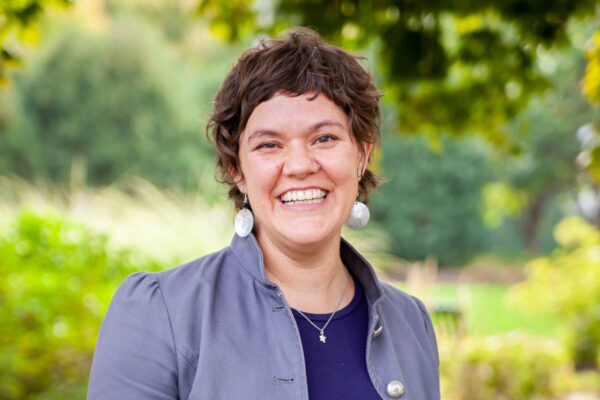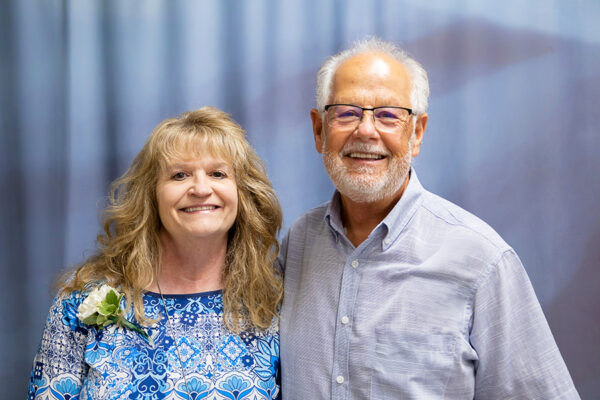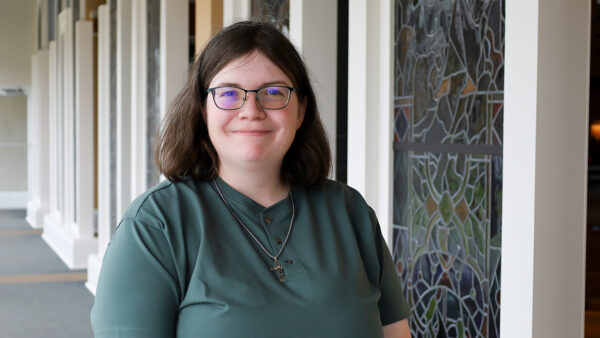Spreading sunshine
On a card table in her family room, Jean Medd writes out birthday wishes every month to St. Paul people, age 75 and older. The notes are inside of brightly colored greeting cards, with scenes of bicycles and flowers and beaches and streams.
Partnering with Pastor Ron Huber, Jean sends about 30 or so cards a month, with thoughts and prayers of good health and happiness for the year ahead.
Jean has been one of the two-person card ministry of the Women of the ELCA for about four years. “I wanted to continue to be active in church,” said Jean, 84. “It doesn’t take a lot of time and I really enjoy it.”
“Sometimes, I get a thank you card or phone call in return.” She saves each of the cards she receives.
It’s clear that receiving a card with a hand-written note inside brightens days. But Steve Toepfer, associate professor at Kent State University, studied benefits in terms of well-being for the authors.
“We are always exploring methods which can improve health, but no one ever looked at a series of letters to see if it benefits the author’s well-being,” Toepfer said.
“We know people who receive letters of gratitude benefit, but what about the authors? Will you feel better by writing letters of gratitude? Are multiple letters better than a single composition?”
The study examined the effects of writing letters of gratitude on three primary qualities of well-being: happiness (positive affect), life satisfaction (cognitive evaluation) and depression (negative affect). Gratitude also was assessed.
Study participants, who ranged in age from 18 to 65, filled out a battery of questionnaires about their well-being, and then they returned to the research lab three more times about a week apart.
The experimental group wrote a letter of gratitude each time while the control group did not.
“What we came away with is that if you are looking to increase your well-being through intentional activities, take 15 minutes three times over three weeks and write letters of gratitude to someone,” Toepfer said. “You’ll feel better on those three variables. There is a cumulative effect, too.
Toepfer said people have a store of gratitude that they carry with them all the time, and by simply using it, they can improve their well-being in significant ways.
“We have this powerful resource we’re carrying with us, but we need to tap into it in order to let it work for us,” he said.
According to the Greeting Card Association, Americans purchase approximately 6.5 billion greeting cards each year. Annual retail sales of greeting cards are estimated between $7 and $8 billion.
The most popular everyday card-sending occasion by far is birthday, followed by sympathy, thank you, wedding, thinking of you, get well, new baby, and congratulations.
The most popular seasonal cards are Christmas cards. This is followed by cards for Valentine’s Day, Mother’s Day, Father’s Day, graduation, Easter, Halloween, Thanksgiving, and St. Patrick’s Day.
Women purchase an estimated 80 percent of all greeting cards. Women spend more time choosing a card than men, and are more likely to buy several cards at once.
Greeting card prices can vary from 50 cents to $10. The vast majority are between $2 and $4.
While Jean writes and sends birthday greetings to seniors of St. Paul, Betty Spies takes care of sending new baby, sympathy, and get-well cards.
Betty sits at her kitchen table and handwrites notes offering comfort and peace to those going through difficult times, and joy for new babies (she’s noticed a trend of more boy babies lately).
She sends about 10-12 cards a week. In 2015, she sent 159 sympathy cards, 171 get well cards, and 26 baby cards.
“I do like to send cards,” she said. “I know a lot of people have gotten away from it. I always enjoy it when my birthday comes, and I get cards in the mail. It’s a good way to stay in contact with people.”
She often keeps the cards she receives, including ones that her husband gave her – his handwriting inside is a precious reminder of their life together.
The card ministry is a perfect fit for Betty because she does not drive, and she can do everything she needs to do from home, she said. Betty also is active in the St. Paul Prayer Chain and on a counting team.
“I’ve been at St. Paul since I was 7 years old,” said Betty, who is 78. “It is my home.”




